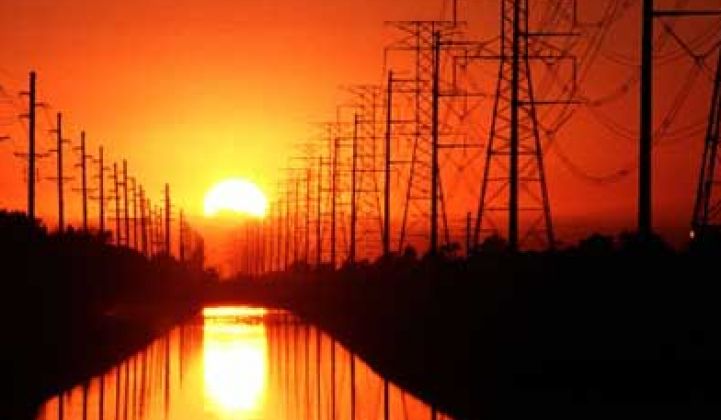Arizona's solar net metering conflict may be over until the next rate-setting process. But the state is only at the beginning stages of dealing with disruptive energy technologies.
Along with a renewed focus on how to structure solar promotion policies in 2014, Arizona regulators may take a wide-ranging look at how energy storage, home energy management, microgrids and high penetrations of distributed generation will impact how power companies deliver service to customers.
It seems Arizona may be ready to embrace the grid edge -- in concept anyway.
Last week, Arizona Corporation Commissioner Bob Burns issued a letter calling for a series of workshops over the coming year on "innovations and technological developments" in the electricity sector that will change utility business models. In his letter, Commissioner Burns implied that net metering is just the warm up act for what utilities will have to deal with in the coming years.
"The proposed scope of this docket is to review the following major innovations and technological areas that appear to have the greatest potential to impact the current energy utility model," wrote Commissioner Burns.
Here are six of the technology and service areas outlined in the letter.
1. Distributed Supply and Storage Resources Enabling Customer Self-Supply: Includes any distributed supply resources (solar technology, fuel cells, etc.); distributed storage devices (battery, flywheel, thermal storage, etc.); and customer shared generation (virtual net metering, etc.)
2. Customer Load Management Technology, Energy Efficiency, Major New Loads and Related Services: Includes customer energy information systems, demand controllers, real-time pricing controls, plug-in electric vehicles, demand response, and alternative services arrangements for customer energy management, etc.
3. Utility-Scale Solar Technology: Includes pumped storage (hydro, compressed air) battery, flywheel, etc.
4. Metering Technology and Services: Includes electronic meters, communications systems (one-way, two-way, real-time), alternative arrangements for meter reading, meter services, meter data management, etc.
5. Transmission and Distribution Automation: Includes real-time information access for situational awareness, real-time physical monitoring and manual control, automated technologies for system self-healing, etc.
6. Micro-Grids: Includes grid-tied and isolated.
Commissioner Burns played an important role in the recent compromise over net metering in Arizona. Although his proposal for a fixed monthly charge of $0.70 per kilowatt on solar systems was far lower than what Arizona Public Service wanted and a bit higher than what the solar industry wanted, it helped get an agreement passed.
Now Burns is preparing the Arizona Corporation Commission for a future that could bring many more difficult choices for regulators.
"We are excited to see that many of the topics at these workshops point to an energy future where customers are taking greater control of their energy usage and are active participants in the energy marketplace," said Annie Lappé, solar policy director at the Vote Solar Initiative, in response to the letter.
That may not excite a utility such as Arizona Public Service, which has long argued that solar is a drain on grid infrastructure. However, Lappé believes the convergence of technologies outlined by Commissioner Burns could create new opportunities to harden the grid and accommodate higher penetrations of solar.
"It is very strategic for the commission to study the ways in which resources like distributed solar could provide more benefits to the grid if coupled with storage and new customer load management technologies," said Lappé.
The battle over net metering could just be the start of utility disruption in Arizona. How effectively the state deals with coming changes depends on how the commission addresses new technology trends. These workshops are a start.



